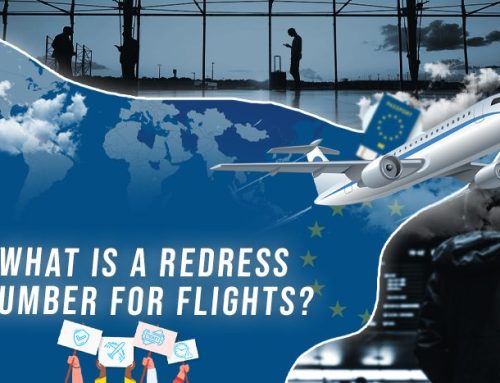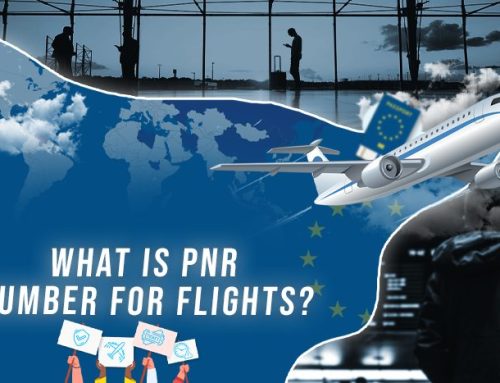The earth’s atmosphere is multi-layered, comprised of five major layers: troposphere, stratosphere, meosphere, thermosphere, and exosphere. Once you transcend these layers, you’re no longer on Earth, instead making your way into space. Commercial airplanes aren’t quite ready for space travel yet, so what layer of the atmosphere do they fly in? Can airplanes fly in the stratosphere? Yes! Not only is it safe to travel in the stratosphere, there are benefits to doing so. Here’s all you need to know.
Key Takeaways
- The stratosphere offers the best place for airplanes to fly due to its stable and clear conditions. By cruising above the turbulence, clouds, and inclement weather typically found in the lower troposphere, planes can provide a smoother and safer travel experience for passengers.
- Flying in the stratosphere provides significant fuel economy and faster travel. With thinner air and reduced air resistance, planes can achieve higher speeds while consuming less fuel, resulting in more efficient and cost-effective flights.
- Commercial airplanes can take advantage of the jet stream, a band of strong winds in the atmosphere, to boost their speed when flying with the stream. Conversely, flying against the jet stream may lead to slower travel times. Understanding and utilizing the jet stream’s effect can optimize flight routes and reduce overall travel durations.
- Despite the higher altitudes in the stratosphere, modern aircraft are equipped with pressurized cabins to maintain a comfortable environment for passengers and crew. This technology enables long-distance travel at high altitudes without compromising passenger well-being.
- Passengers flying in the stratosphere are treated to breathtaking views of the Earth below. Cruising at such heights provides a rare and awe-inspiring opportunity to witness the planet from an entirely different perspective, making the journey not only efficient but also visually remarkable.
Why do Planes Fly in the Stratosphere?
The stratosphere is the second lowest part of the atmosphere, and it’s the best place for planes to fly. They can avoid turbulence and clouds that can obscure visibility. It’s also drier, preventing condensation and ice from building up on the wing. This is because weather typically occurs below the stratosphere in the troposphere. If you’re able to fly above it, then it shouldn’t impact your flight.
Now, this isn’t always the case. In some cases, extremely bad weather can cause turbulence in the stratosphere, so if you’ve ever encountered some, it’s nothing to worry about. Instead, your pilot will reroute to avoid it if possible. It may add some time to your flight, but it will avoid potential damage to the plane and potentially uncomfortable turbulence on the flight.
Additionally, the air is thinner in the stratosphere – approximately 1,000 times thinner than at sea level, to be precise – so it provides less air resistance. The air resistance when you’re traveling through the stratosphere is about half of what it is on the ground, so you get faster travel with better fuel economy. This is because you are using less power to go the same speeds when you’re able to cruise in the stratosphere, so it’s much more efficient.
Catching the Jet Stream

The jet stream is a narrow band of strong winds that occur in the atmosphere, about 30,000 feet above the ground, though this varies. Luckily for planes, this is often at the same height that it’s flying, between the troposphere and the stratosphere.
When planes are able to catch them, they give the trip a little boost of speed, helping you get to your final destination quicker when you are flying with the jet stream. You will face the opposite when you are flying against them. The jet stream encircles the entire earth from east to west, and it can make a huge difference in your trip.
Conclusion
Planes can – and should – fly in the stratosphere because it provides optimal flying conditions, helping the plane operate most efficiently and getting passengers to their final destinations quicker.
Planes are able to avoid most inclement weather in the stratosphere, including clouds, rain, storms, and snow. They fly over them instead of through or around them, which could cause delays. They face less air resistance, so they are able to use less power and fuel to operate.
Best of all for passengers, you get a unique view of the world around and below you when you are cruising this high in the plane.
Frequently Asked Questions
-
Is it safe to fly in the stratosphere?
Yes, it is safe to fly in the stratosphere. Commercial airplanes are designed and equipped to handle the lower air pressure and temperature conditions at higher altitudes. The stratosphere’s stable weather conditions and avoidance of turbulence contribute to the overall safety of flying in this atmospheric layer.
-
Can planes fly above the stratosphere?
While some specialized aircraft, like spaceplanes and experimental high-altitude vehicles, can fly above the stratosphere and enter the mesosphere or even reach the edge of space, commercial airplanes are not capable of reaching such extreme altitudes. They are optimized to operate within the lower stratosphere for efficiency and passenger comfort.
-
Do all flights take advantage of the jet stream?
Not all flights take advantage of the jet stream. Flight paths are determined by various factors, including weather conditions, air traffic control instructions, and fuel considerations. While pilots and airlines may plan routes to utilize the jet stream when possible, it’s not always feasible or necessary for every flight.
-
Does flying in the stratosphere affect climate change?
Flying in the stratosphere can contribute to climate change due to the emission of greenhouse gases, such as carbon dioxide and nitrous oxide, from aircraft engines. While the fuel efficiency benefits in the stratosphere may reduce some emissions per flight, the cumulative impact of global aviation on the environment is still a concern.
-
Are there any drawbacks to flying in the stratosphere?
While flying in the stratosphere offers numerous advantages, there are some potential drawbacks. Higher altitudes may result in longer ascent and descent times, which could lead to increased fuel consumption during those phases of the flight. Additionally, airlines must carefully manage cabin pressurization to ensure passenger comfort and safety at these heights.







